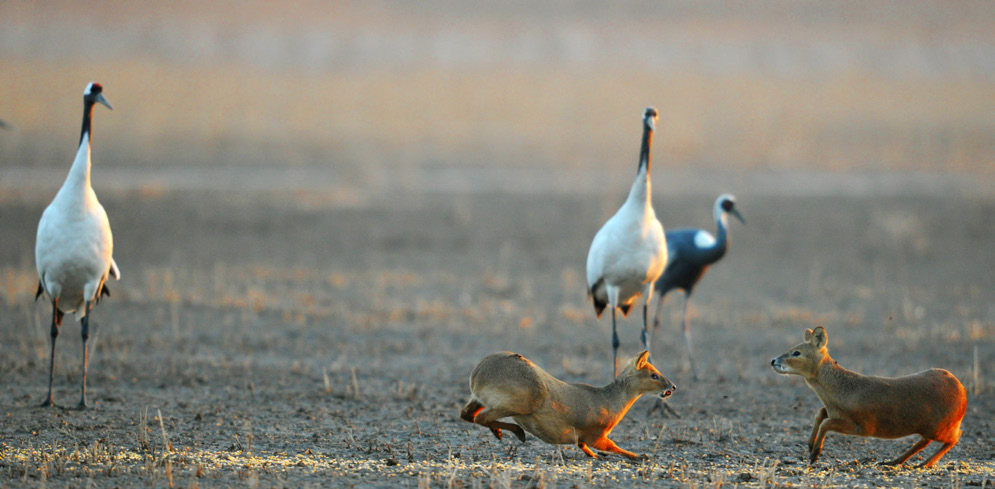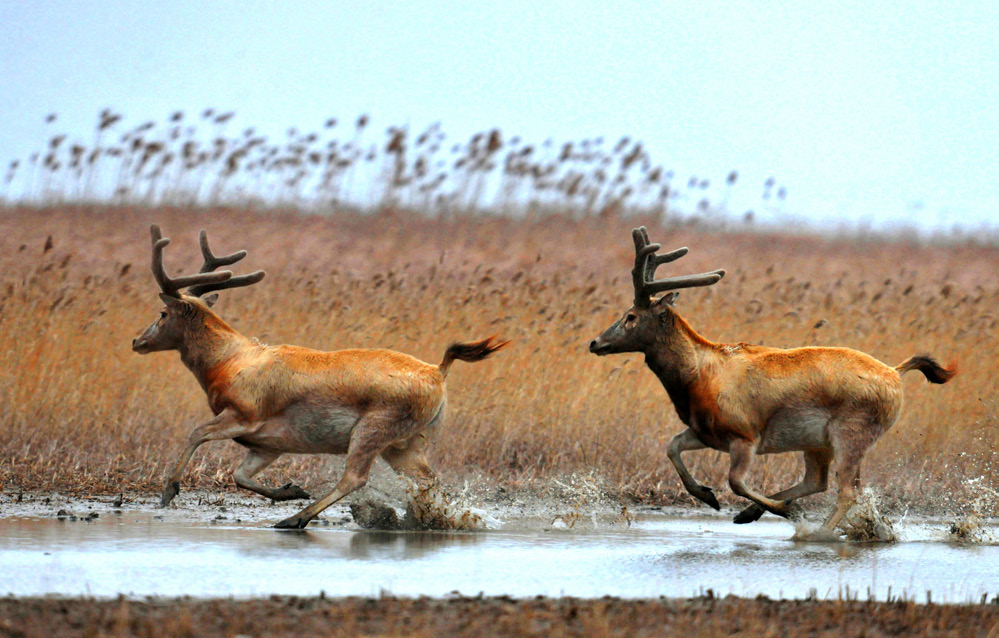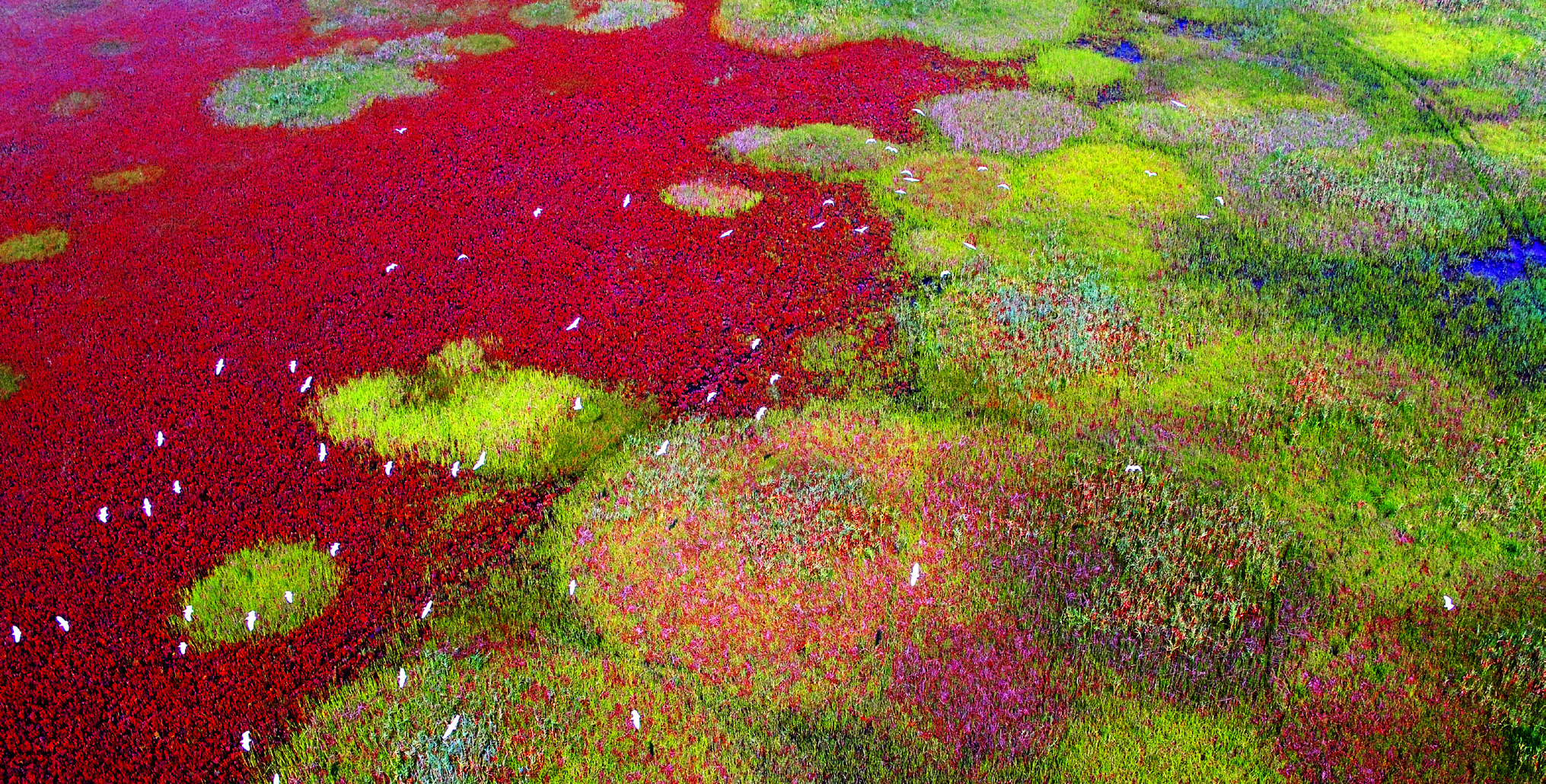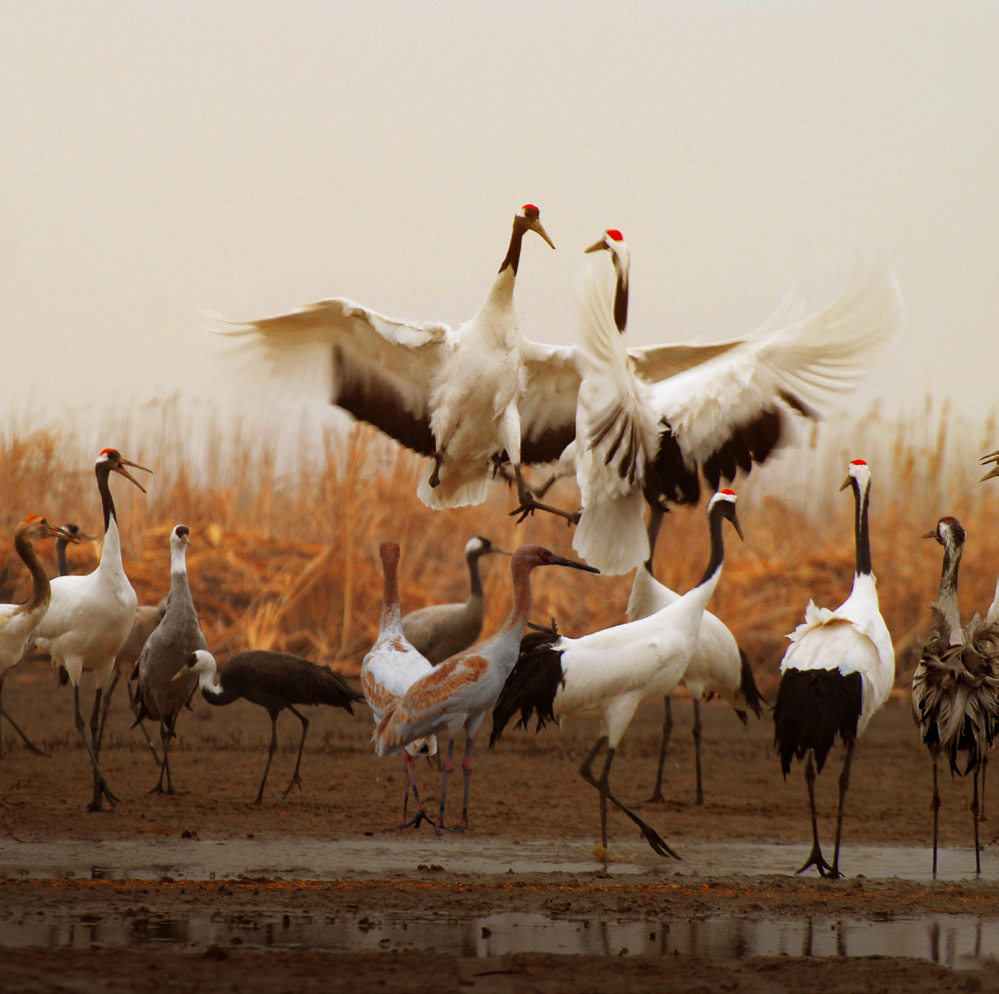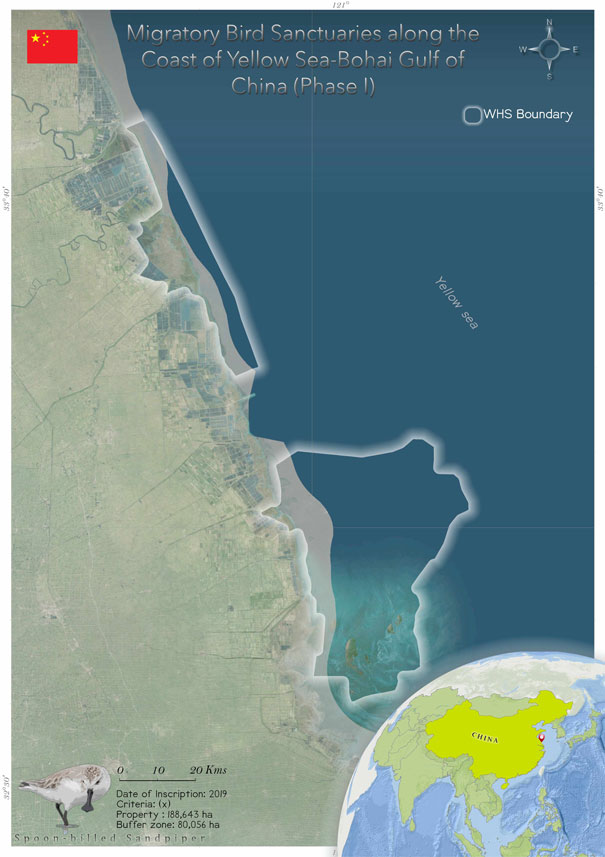
Migratory Bird Sanctuaries along the Coast of Yellow Sea-Bohai Gulf of China (Phase I) (1606)
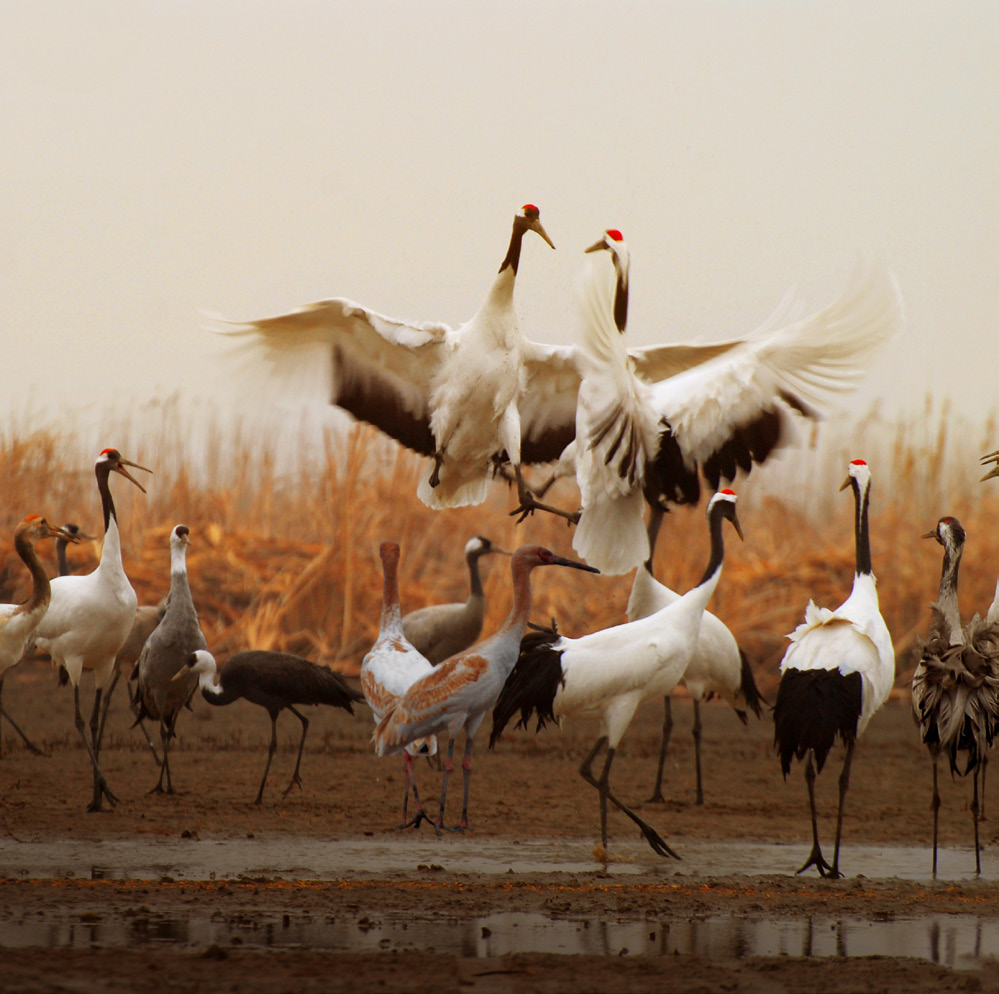 The Migratory Bird Sanctuaries along the Coast of Yellow Sea-Bohai Gulf of China (Phase I) has been designated as a World Heritage Site by the United Nations Educational, Scientific and Cultural Organization (UNESCO) in 2019. The site encompasses five protected areas along the Yellow Sea coast, covering a total area of 1.14 million hectares. The site is important for the conservation of migratory birds that use the East Asian-Australasian Flyway, including globally threatened species such as the Spoon-billed Sandpiper and the Black-faced Spoonbill. The site provides crucial stopover, breeding and wintering habitats for millions of waterbirds. The World Heritage Site designation acknowledges the significant efforts made by the Chinese government to protect the region's unique biodiversity. The first phase of the conservation project, which led to the site's designation, focused on establishing new protected areas, expanding existing ones and promoting sustainable land use practices. The site's designation as a World Heritage Site raises the profile of the area's conservation needs and provides additional support for future conservation efforts. The project's second phase will continue to focus on improving the management and monitoring of the protected areas and promoting sustainable land use practices. The World Heritage Site designation is an important recognition of the ecological significance of the region and serves as a reminder of the need for continued efforts to conserve and protect migratory bird habitats along the Yellow Sea-Bohai Gulf coast.
The Migratory Bird Sanctuaries along the Coast of Yellow Sea-Bohai Gulf of China (Phase I) has been designated as a World Heritage Site by the United Nations Educational, Scientific and Cultural Organization (UNESCO) in 2019. The site encompasses five protected areas along the Yellow Sea coast, covering a total area of 1.14 million hectares. The site is important for the conservation of migratory birds that use the East Asian-Australasian Flyway, including globally threatened species such as the Spoon-billed Sandpiper and the Black-faced Spoonbill. The site provides crucial stopover, breeding and wintering habitats for millions of waterbirds. The World Heritage Site designation acknowledges the significant efforts made by the Chinese government to protect the region's unique biodiversity. The first phase of the conservation project, which led to the site's designation, focused on establishing new protected areas, expanding existing ones and promoting sustainable land use practices. The site's designation as a World Heritage Site raises the profile of the area's conservation needs and provides additional support for future conservation efforts. The project's second phase will continue to focus on improving the management and monitoring of the protected areas and promoting sustainable land use practices. The World Heritage Site designation is an important recognition of the ecological significance of the region and serves as a reminder of the need for continued efforts to conserve and protect migratory bird habitats along the Yellow Sea-Bohai Gulf coast.
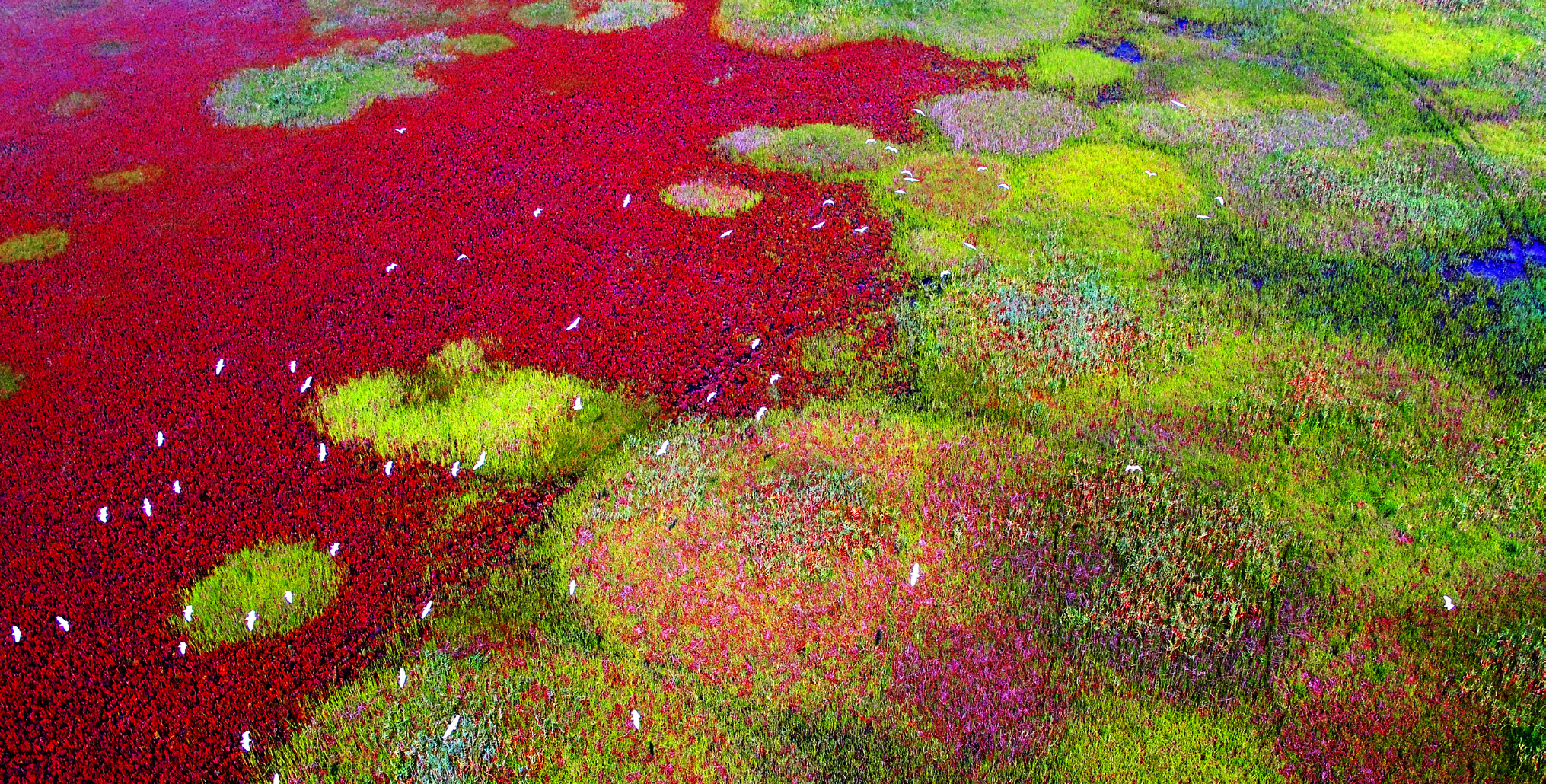 The Migratory Bird Sanctuaries along the Coast of Yellow Sea-Bohai Gulf of China (Phase I) is a World Heritage Site located along the eastern coast of China. It is comprised of two protected areas, namely the Yancheng National Nature Reserve in Jiangsu Province and the Tiaozini Wetland Nature Reserve in Shandong Province. This site is considered to be one of the most important areas for migratory birds in the world, as it provides critical habitat and stopover points for over 50 species of shorebirds and waterbirds, many of which are threatened or endangered. The Yellow Sea-Bohai Gulf region is a vital stopover point for birds traveling along the East Asian-Australasian Flyway, which spans from Siberia to Australia and New Zealand. The Yancheng National Nature Reserve is a wetland area consisting of intertidal mudflats, salt marshes, and shallow bays. It is home to over 400 species of birds, including the endangered spoon-billed sandpiper, and provides crucial feeding and resting areas for migratory birds during their long journeys.
The Tiaozini Wetland Nature Reserve, on the other hand, is a coastal wetland that serves as an important breeding site for the endangered Saunders's gull. It also provides habitat for other threatened bird species, such as the Far Eastern curlew and the black-faced spoonbill. The Migratory Bird Sanctuaries along the Coast of Yellow Sea-Bohai Gulf of China (Phase I) was inscribed as a World Heritage Site in 2019 for its outstanding universal value as a crucial stopover point and breeding site for migratory birds, as well as its unique and fragile coastal wetland ecosystems. It is an important site for the conservation of biodiversity and for the global efforts to protect migratory bird species.
The Migratory Bird Sanctuaries along the Coast of Yellow Sea-Bohai Gulf of China (Phase I) is a World Heritage Site located along the eastern coast of China. It is comprised of two protected areas, namely the Yancheng National Nature Reserve in Jiangsu Province and the Tiaozini Wetland Nature Reserve in Shandong Province. This site is considered to be one of the most important areas for migratory birds in the world, as it provides critical habitat and stopover points for over 50 species of shorebirds and waterbirds, many of which are threatened or endangered. The Yellow Sea-Bohai Gulf region is a vital stopover point for birds traveling along the East Asian-Australasian Flyway, which spans from Siberia to Australia and New Zealand. The Yancheng National Nature Reserve is a wetland area consisting of intertidal mudflats, salt marshes, and shallow bays. It is home to over 400 species of birds, including the endangered spoon-billed sandpiper, and provides crucial feeding and resting areas for migratory birds during their long journeys.
The Tiaozini Wetland Nature Reserve, on the other hand, is a coastal wetland that serves as an important breeding site for the endangered Saunders's gull. It also provides habitat for other threatened bird species, such as the Far Eastern curlew and the black-faced spoonbill. The Migratory Bird Sanctuaries along the Coast of Yellow Sea-Bohai Gulf of China (Phase I) was inscribed as a World Heritage Site in 2019 for its outstanding universal value as a crucial stopover point and breeding site for migratory birds, as well as its unique and fragile coastal wetland ecosystems. It is an important site for the conservation of biodiversity and for the global efforts to protect migratory bird species.
Criterion (x)
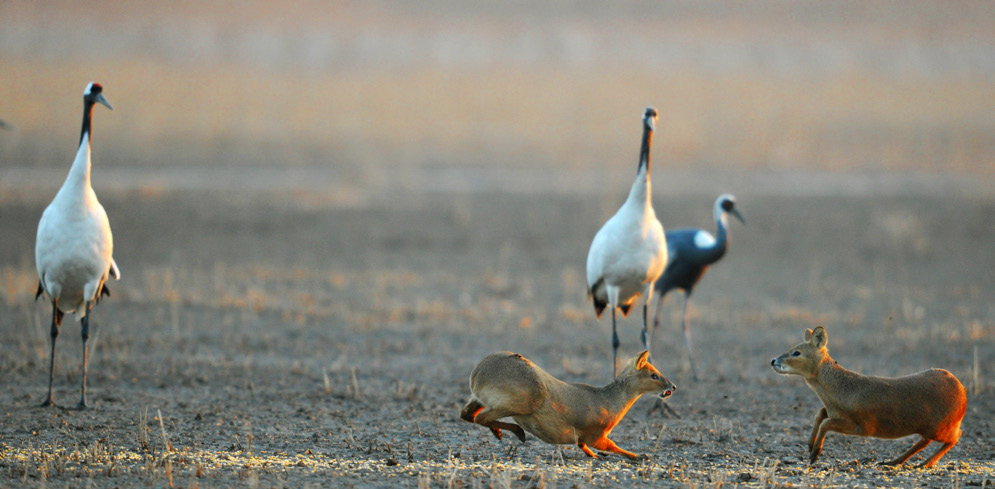 The property supports some 680 species of vertebrates, including 415 species of birds, 26 species of mammals, 9 species of amphibians, 14 species of reptiles, 216 species of fish, as well as 165 species of zoobenthos. Large aggregations of birds depend on the coast as stop-over, moulting, staging, wintering, foraging and/ or breeding grounds. The property’s tidal flats are of exceptional importance for the conservation of the world’s migratory birds, supporting globally significant numbers, including rare and threatened species. The Phase I tidal flats offer critically important seasonal habitats for more than 10% of the East Asian-Australasian Flyway populations, including two of the world’s rarest migratory birds – the Spoon-billed Sandpiper and Nordmann’s Greenshank. These remaining natural habitats are vital for the very survival of these birds and a wide array of other threatened species including the Black-faced Spoonbill, Oriental Stork, Red-crowned Crane and Great Knot.
The property supports some 680 species of vertebrates, including 415 species of birds, 26 species of mammals, 9 species of amphibians, 14 species of reptiles, 216 species of fish, as well as 165 species of zoobenthos. Large aggregations of birds depend on the coast as stop-over, moulting, staging, wintering, foraging and/ or breeding grounds. The property’s tidal flats are of exceptional importance for the conservation of the world’s migratory birds, supporting globally significant numbers, including rare and threatened species. The Phase I tidal flats offer critically important seasonal habitats for more than 10% of the East Asian-Australasian Flyway populations, including two of the world’s rarest migratory birds – the Spoon-billed Sandpiper and Nordmann’s Greenshank. These remaining natural habitats are vital for the very survival of these birds and a wide array of other threatened species including the Black-faced Spoonbill, Oriental Stork, Red-crowned Crane and Great Knot.
Status
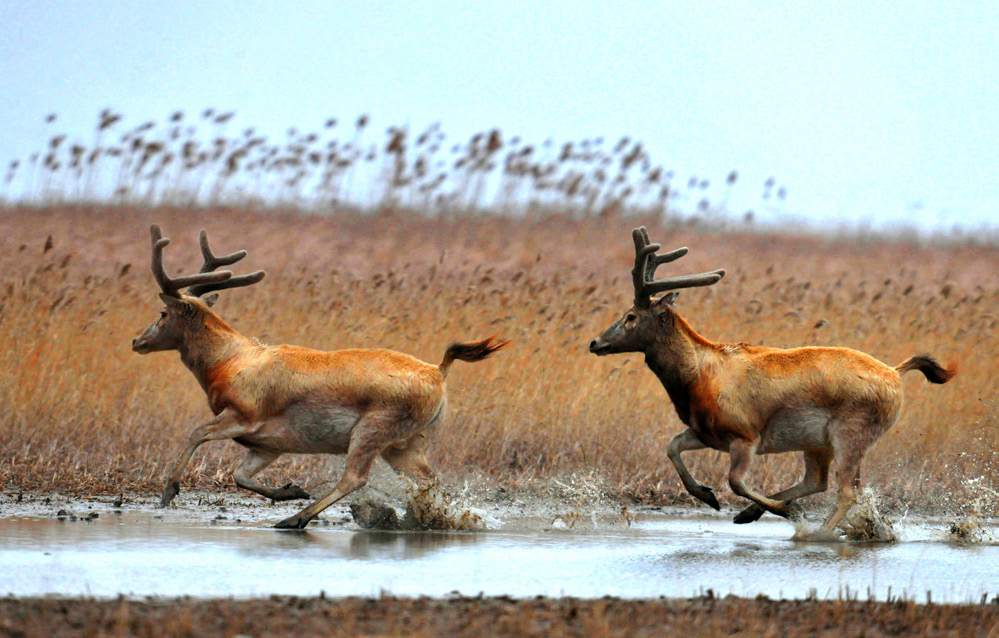 The protection and management of the Migratory Bird Sanctuaries along the Coast of Yellow Sea-Bohai Gulf of China (Phase I) is a collaborative effort between various government agencies, non-governmental organizations, and local communities. The Chinese government has established laws and regulations to protect the wetlands and wildlife of the area, including the Wild Animal Protection Law and the Regulations on Nature Reserves. The Yancheng and Tiaozini reserves are also designated as Ramsar sites, which are wetlands of international importance. Management plans have been developed for both reserves, which include measures to monitor and protect the bird populations, control human activities that could harm the wetland ecosystems, and promote eco-tourism and education programs. Both reserves have visitor centers and interpretive trails to educate visitors on the importance of the wetlands and the bird species that depend on them. In addition, international collaboration is a key aspect of the protection and management of this World Heritage Site. China has worked with other countries along the East Asian-Australasian Flyway to develop a conservation strategy for migratory birds, which includes coordinated monitoring and management efforts. However, despite these efforts, the Migratory Bird Sanctuaries along the Coast of Yellow Sea-Bohai Gulf of China (Phase I) still face significant threats, such as habitat loss due to development and pollution from industrial and agricultural activities. Ongoing monitoring and conservation efforts are needed to ensure the longterm protection of this important site for migratory birds.
The protection and management of the Migratory Bird Sanctuaries along the Coast of Yellow Sea-Bohai Gulf of China (Phase I) is a collaborative effort between various government agencies, non-governmental organizations, and local communities. The Chinese government has established laws and regulations to protect the wetlands and wildlife of the area, including the Wild Animal Protection Law and the Regulations on Nature Reserves. The Yancheng and Tiaozini reserves are also designated as Ramsar sites, which are wetlands of international importance. Management plans have been developed for both reserves, which include measures to monitor and protect the bird populations, control human activities that could harm the wetland ecosystems, and promote eco-tourism and education programs. Both reserves have visitor centers and interpretive trails to educate visitors on the importance of the wetlands and the bird species that depend on them. In addition, international collaboration is a key aspect of the protection and management of this World Heritage Site. China has worked with other countries along the East Asian-Australasian Flyway to develop a conservation strategy for migratory birds, which includes coordinated monitoring and management efforts. However, despite these efforts, the Migratory Bird Sanctuaries along the Coast of Yellow Sea-Bohai Gulf of China (Phase I) still face significant threats, such as habitat loss due to development and pollution from industrial and agricultural activities. Ongoing monitoring and conservation efforts are needed to ensure the longterm protection of this important site for migratory birds.
